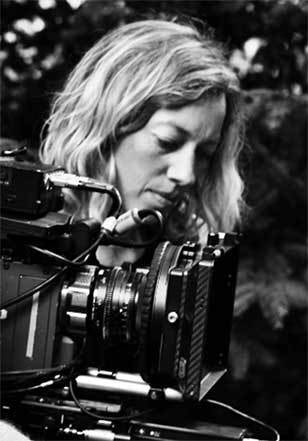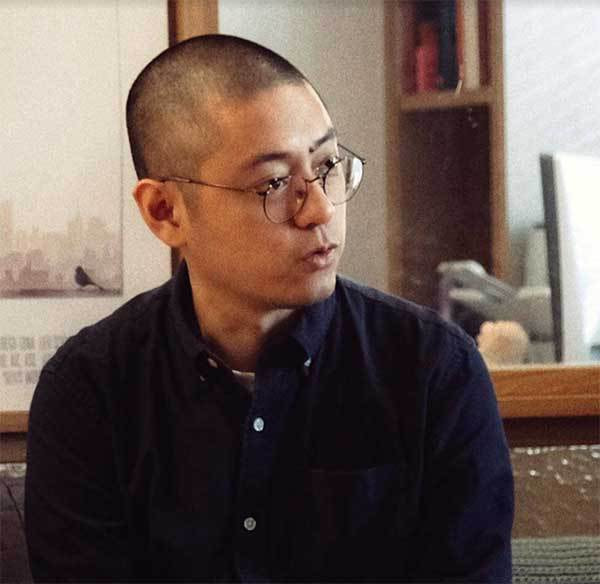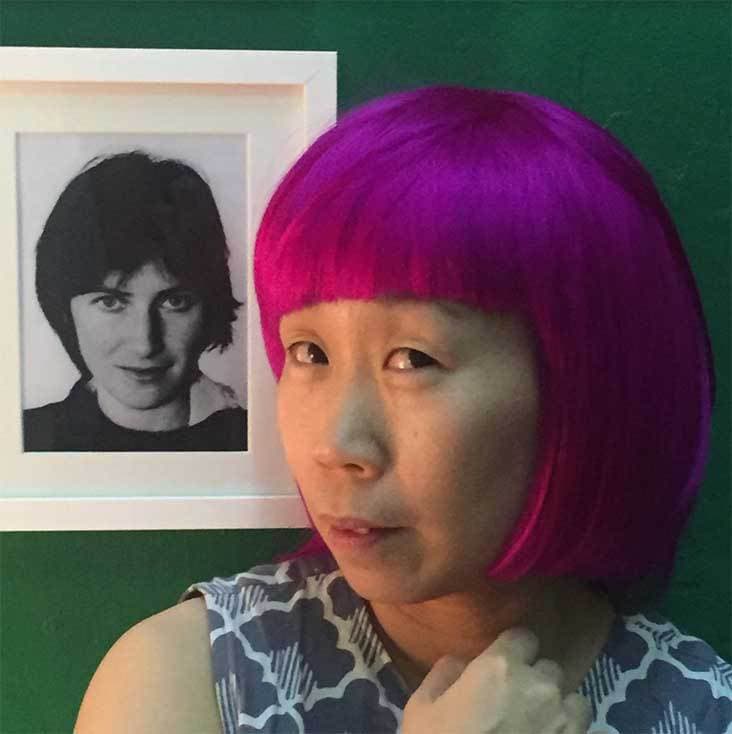第11房
監督:曾翠珊(香港)
振付:郭亞福 & 黃天寶(シンガポール)
[香港 2019]
Ward 11
Directors:Tsui-shan TSANG (Hong Kong)
Choreographers:Aaron Ah-hock KHEK & Ix Thien-pau WONG (Singapore)
[Hong Kong 2019]
Directors Tsui-shan TSANG(曾翠珊)
Choreographers Aaron Ah-hock KHEK(郭亞福) & Ix Thien-pau WONG(黃天寶)
Photo courtesy of Agnes Siu(蕭美芝)
Co-Producer: Elysa WENDI, Jeremy CHUA, Raymond WONG, West Kowloon Cultural Disctrict
Co-commissioned by: Cinemovement, City Contemporary Dance Company, West Kowloon Cultural District

曾翠珊
第31回香港アカデミー賞最優秀新人監督賞(2012)受賞作家。短編映画からキャリアをスタートし国際的な評価を得る。2008年には初監督作品『戀人路上』が第8回南台湾映画祭で最優秀ドラマ賞を受賞。次作『大藍湖』は2012年に上海国際映画祭のアジア新人審査員賞、2013年にはゴールデンコアラ中国映画祭の特別審査員賞を受賞し、国際的な評価を獲得した。2014年に発表された初のドキュメンタリー映画『河上變村』はアジア・フィルム・エイド2016博愛賞を受賞。映画制作に加えて広告やテレビ番組制作に従事している。2019年4月に最新監督作『非分熟女』が公開された。
Tsang Tsui-Shan
Tsang Tsui-Shan, Best New Director of the 31st Hong Kong Film Award 2012. Starting with short film productions, works have been presented internationally. In 2008 her first directed feature film Lovers On the Road won the Best Drama Award of the 8th South Taiwan Film Festival. And her second feature Big Blue Lake succeed internationally, it had won the Jury Special Award of the Golden Koala Chinese Film Festival 2013 and the Asian New Talent Jury Prix of the Shanghai International Film Festival 2012. Tsang‘s first documentary feature Flowing Stories (2014), won the Humanitarian Award of FilmAid Asia in 2016. Tsang has also participated in advertisements and online TV productions in addition to film production. Her latest feature film The Lady Improper was released in 2019 April.
ダンス映画監督たちへのメールインタビュー
インタビュー・翻訳:黒田瑞仁
Q
二人の不思議な距離感と存在感が深く印象に残っています。被写体の二人とは、どのように出会って、どのような経緯で撮影に至りましたか?
A:曾翠珊
『第11房』は、香港とシンガポールとの間の共同委託プロジェクトでした。アーロンとイックスの二人とはこのプロジェクトを通じて知り合いました。アーロンと出会った時、彼の恋人イックスとの愛の物語を聞いて、二人の愛のダンス映画の製作を決めました。二人は20年以上も幸せな恋人同士ですが、それは分断や病気に苦しめられ続けた20年でもあったのです。
Q
監督は映画監督としての華々しい経歴をお持ちですが、ダンス映画はこれまで撮ったことはありましたか。ダンス映画を作成するとき、ダンスをどのように捉え、映画にしましたか。
A:曾翠珊
『第11房』は私の3作目のダンス映画です。最初のダンス映画はマンチェスターのアートセンター、HOMEのこけら落としとして製作しました。
『息を吸って/吐く』- HOMEによる委託プロジェクト
ダンス映画 / 10’31” / 2016/ イギリス
https://vimeo.com/213057956
それ以来、私はダンス映画に夢中です。どこまで身体の動きが、言葉なしに物語を伝えられるかを追求していきたいです。まるでサイレント映画時代のようですよね。観客は言葉の説明に気を取られずに、人間の体に集中できるのです。
A Mail Questionnair to Dance Film Directors
Interview : Mizuhito Kuroda
Q
The relationship and presence of the two dancers are unforgettable. How did you meet Ix and Hock, and how did you come to make a film about the two?
A:Tsui-shan Tsang
Ward 11 is a commissioning project between Hong Kong and Singapore. I met Aaron and Ix through this project. I met Aaron first and after knowing his love story with his lover Ix, then I decided to film their dance love piece. They have been in love over 20 years happily but almost full of challenge, suffering from separation and illness.
Ward 11 is about love, and a spiritual journey. We formed a spiritual bond and wanted to share this through images.
Q
You have a very impressive career as a filmmaker. Have you ever worked with a dancer or directed a dance film before "Ward 11"? Tell us about your thoughts towards dance and its relation to film.
A:Tsui-shan Tsang
Ward 11 is my third dance piece. I made my first dance film for HOME ( a Art centre in Menchater ) as an opening exhibition work
breathe in/breathe out - A commissioning project by HOME
Dance Video / 10’31” / 2016/ UK
https://vimeo.com/213057956
I started to fall in love with dance films since then. I want to explore more how body movement can tell stories without any dialogue, kind of back to the silent film era. Let the audience focus on the human body, rather than just on wordings.
タブラ・ラサ/白紙
監督・編集:ニコラ・ヘップ
踊り:タチアナ・スピワック
[オランダ・ポーランド 2020]
Tabula Rasa
Directed and Edited by Nicola Hepp
Dance:Tatiana Śpiewak
[Netherlands/Poland 2020]
Featured in the film is dancer Tatiana Śpiewak, shot by her brother, video maker Jeremi Śpiewak and directed remotely by Nicola Hepp.
Ólafur Arnalds graciously gave us permission to use his track "Allt Varð Hljótt" for this film.
Tabula Rasa is a non-narrative film, encapsuling a moment in time, a place of limbo, a state of mind. Through movement, image and music, it conveys an array of emotions coming from notions of stillness, loss and hope.
Dance: Tatiana Śpiewak
Camera and Grading: Jeremi Śpiewak
Directed and Edited by Nicola Hepp
"Allt Varð Hljótt" written by Olafur Arnalds
© Published by Arnalds, Olafur
Administered by Kobalt Music Publishing Ltd
Special thanks to Sven Hasenjäger, Giulio Mauchigna, Louis Grant and Ólafur Arnalds

ニコラ・ヘップ
スウェーデン、スイス、オランダで教育を受ける。2006年には舞踊とニューメディア分野でアムステルダム芸術大学校修士号を取得。2003年より自身の舞台作品に映像プロジェクションを取り入れる。各国の映画祭や展示に監督作品や振付作品を提供し、多数の受賞およびノミネーションを得る。作品制作の傍ら、広告、ムードフィルム、短編映画、商業映画への振付提供やダンス監修を行っている。
Nicola Hepp
Educated in Sweden, Switzerland and The Netherlands, Nicola Hepp obtained her Master in Choreography and New Media at the Amsterdamse Hogeschool voor de Kunsten in 2006. Her live performances have involved video and projections since 2003. Nicola's choreographies and films have been shown in festivals and venues internationally and have won several awards and nominations.
Besides making her own films, she also works under commission as a choreographer and movement director for ads, mood films, shorts and feature films.
ダンス映画監督たちへのメールインタビュー
インタビュー・翻訳:黒田瑞仁
Q
あなたはこの作品を遠隔で監督し、カメラワークはダンサーの弟が担当したと知りました。どのような経緯でこのような創作形式になったのでしょうか?遠隔監督をする際に具体的に何をされたのでしょうか?
A:ニコラ・ヘップ
作品の最初のアイディアはCOVID-19の一回目のロックダウン中に浮かびました。タチアナと私は当時の状況でも、何かポジティブなものを創作する必要について語っていたのです。彼女はポーランドの故郷の町にいて、私はオランダにいました。電話とテキストメッセージで案を膨らませていきました。私は絵コンテを描き(これは編集段階で結果的に形は変わりましたが)、タチアナと彼女の弟のジェレミーがロケ地選びをしてくれました。最終的に選ばれたロケ地はこの一箇所で、グダンスキ橋と呼ばれるヴィスワ川に架かる橋です。
タチアナとジェレミーがある日の午後に撮影してくれたテスト映像をもとに、アイディアを修正し作業にあたった後、本番の撮影は早朝に行われました。私の遠隔監督としての役割は、主に原案を発案したこととその実行に寄り添ったことです。最終的な編集と選曲も私が行い、このようなストーリーと映画が出来上がったのです。
Q
撮影場所が、どこかダンサー自身との関係を感じさせ、とても印象的でした。この場所はどこで、どうやって見つけたのでしょうか。また、この橋が象徴しているもの、意味するところを教えてください。
A:ニコラ・ヘップ
グダンスキ橋はポーランドのワルシャワにある古い鉄道橋で、ヴィスワ川に架かっています。場所の提案はタチアナから、私が彼女に作品の一部を橋で撮影しようと話した時に持ち上がったものでした。この場所があまりに美しく、タチアナが彼女のダンスに込めた感情と重なっていると感じたので、最終的に撮影はこの橋の上だけで行うことにしました。橋が象徴しているのはリンボと呼ばれる辺獄、何かの間にいるどっちつかずな状態です。そして失われてしまった時代へのノスタルジアも香ります・・・
A Mail Questionnair to Dance Film Directors
Interview : Mizuhito Kuroda
Q
I believe you directed this film remotely, and the dancer's brother did the camerawork. How did this come to happen, and what did you do exactly in a remote direction?
A:Nicola Hepp
The idea for Traces was born during the first lockdown for Covid -19. Tatiana and I talked about the necessity to let creativity out and allow something positive to come out of the situation. She was in her hometown in Poland, and I was in The Netherlands at the time. We developed the idea via phone calls and text messages. I made a rough storyboard ( which eventually was deviated from quite extensively in the edit) and Tatiana and her brother Jeremy went out searching for locations. In the end we settled for just one location, the bridge over Vistula called Most Gdanski.
Tatiana and Jeremy went one evening to testfilm and we then adjusted the idea and worked on some issues after which they returned early morning to shoot. My part in the remote directing was mainly coming with the initial idea and then working it out together. The end edit and choice of music was also in my hands, creating the film and story that it has become.
Q
The location was impressive, somehow seemed to be connected with the dancer. Where is that location, How did you find it and what does it mean or represent?
A:Nicola Hepp
The Most Gdanski is an old railway bridge over the river Vistual in Warszawa, Poland. The location was suggested by Tatiana after we had talked about shooting a part of the film on a bridge. In the end I felt that this location was so beautiful and fitted so well with the feeling Tatiana put into her dance material that we ended up only shooting there. The bridge stands for a certain limbo, of being in-between things. Also with a snuff of Nostalgia for bygone times…
一棵樹・私はいつか岩になる
共同監督:チャン・チュク エリサ・ウェンディ
ダンスアーティスト:メーガン=ハ・ヨン・ミ
[香港/シンガポール 2019]
Someday I will Become a Rock
Co-Directors:CHEUK Cheung, Elysa WENDI
Dance artist:HA Young Mi, Megan
[ Hong Kong/Singapore 2019]
Co-Directors: CHEUK Cheung, Elysa WENDI
co–producers:
Elysa WENDI, Jeremy CHUA, Raymond WONG,
West Kowloon Cultural District
film and choreographic directions:
CHEUK Cheung, Elysa WENDI
dance artist:
Megan HA Young Mi
production credits
Editor/Jin Po YIP
Sound Designer/Cyrus TANG
Director of Photography/Russell MORTON
Post Production House/Pica Pica Media

チャン・チュク
映画作家、ア・プリオリ・イメージの共同創設者。チャイニーズオペラのドキュメンタリーを3作品監督。2013年には監督作『マイウェイ』で香港芸術発展賞の新人賞を受賞。2019年には『バンブーシアター』で金馬賞ベストドキュメンタリー賞および香港アカデミー賞最優秀新人監督賞のノミネートを果たした。2017年にトーキョーアーツアンドスペースのレジデンスプログラムに招聘されている。2018年の舞台作品『肖像曲』の共同演出では崑劇、能やオペラといった異なる背景をもったアーティストと共同創作を行なった。現在、能役者についてのドキュメンタリー作品を制作中。
CHEUK Cheung
Filmmaker and Co-founder of A Priori Image. CHEUK directed three documentaries about Chinese Opera. In 2013, he received the Award for Young Artist in Hong Kong Arts Development Awards for My Way. In 2019, he received the nomination for Best Documentary at the Golden Horse Awards and Best New Director at the Hong Kong Film Awards for Bamboo Theatre. In 2017, he was invited by Tokyo Arts and Space’s residency program. In 2018, he co-directed a theatre piece Songs of Portrait, involving diverse background artists from Kunqu, Noh and Opera. Now he is working on a documentary about Noh Actor.

エリサ・ウェンディ
ダンスアーティスト、映像作家。シンガポールおよび香港を拠点に活動。場所、時間、身体から想起される記憶に魅了され、自身の舞台と映画双方のテーマとして探求。自身の映画作品にはダンスの眼差しと、パフォーマンス的なアプローチといった領域横断的な姿勢で取り組んでいる。短編映画『デリバリー 1958』は南台湾映画祭2018で最優秀実験映画賞を受賞、『許す 許さない』は香港芸術館映画祭2020で最優秀ドキュメンタリー賞を受賞した。2015年にジェレミー・チュアと共にシネムーブメントを設立。
Elysa WENDI
Elysa Wendi is a dance artist and filmmaker working between Singapore and Hong Kong. Preoccupied with the abstraction of memory from place, time and biographical traces, Wendi explores these themes in her live and filmic works. Straddling between disciplines, Wendi develops her films with a choreographic eye and performative approach. Her short film 1958 Delivery won the Best Experimental Film award at the 2018 South Taiwan Film Festival, and her film Forgive or Not to Forgive won Best Documentary at Hong Kong ArtHouse Film Festival 2020. She co-founded Cinemovement together with film producer Jeremy Chua in 2015.
ダンス映画監督たちへのメールインタビュー
インタビュー・翻訳:黒田瑞仁
Q
ダンサーの踊りに対する考えや、とても個人的なヒストリーが丁寧に語られています。監督も共同監督ですね。このような作品をどうやって企画し、取材し、立ち上げていったのですか。
A
エリサとチュク:私たち二人の監督は子供時代を振り返り、思い出やエピソードを発掘するとても長い話し合いをしました。その思い出やエピソード達はゆっくりと繋がっていき、この作品の構造をなしていったのです。こうしてできたものを自伝的な作品にしていきました。ダンサーの彼女の経歴も盛り込みながら、最終的にその全てを彼女は自分のストーリーとして取り込んだのです。
Q
語られる内容は私的ですが、聴覚と視覚の表現は小さくまとまらずに大胆に展開します。どこから映像的なアイディアが生まれたのでしょう?
A
エリサとチュク:音響効果の一部は、ダンサー自身が発した音声からとられています。一方でもっと場所性のない、空間との関係だけを意識した音響もあります。
エリサ:私にとって、音とはどこか遠い時空の内面世界のようなものです。ビジュアルについてはチャールズ&レイ・イームズの『パワーズ・オブ・テン』を思い出します。『パワーズ・オブ・テン』はシカゴの湖畔のほとりから始まり、徐々に観客を銀河系の外側に連れて行く映画でした。
チュク:水は私たちのこの映画で強い意味と役割を持っています。私たち二人とサウンドデザイナーのサイラスは観客の想像力と感情を刺激するために水をサウンドトラックの重要な要素に選びました。
A Mail Questionnair to Dance Film Directors
Interview : Mizuhito Kuroda
Q
The dancer tells her thoughts and her personal history in the film. The piece was very personal, but the film was co-directed by two directors, so I believe it was a collective work as a whole. How did this film project start and proceed to create this film?
A
Elysa and Cheuk: A very long conversation between us to excavate our childhood memories and stories, which took quite a slow process to collectively merge into a new construction to create this film. We then took the more autobiographical approach, connecting to the dancer's background while she embodied the stories as her own.
Q
The interview is very personal, but the sound and the visual effects are quite large-scaled. Where did these audio and visual ideas come from?
A
Elysa and Cheuk: The audio partially taken from the dancer's vocal projection during the shoot and some parts relate to the more place-less kind of spatial connection in sound.
Elysa: Personally, the sound is like a certain internal landscape in a faraway time. For the visual, I recall the Powers of Ten from Charles and Ray Eames....as the scene started at a picnic by the lakeside in Chicago, and gradually transported the audience to the outer edges of the universe.
Cheuk: Water has a strong connection and role in our film, so we both and sound designer Cyrus tried to use water as the key element of the soundtrack, to trigger audience's imagination and emotion.